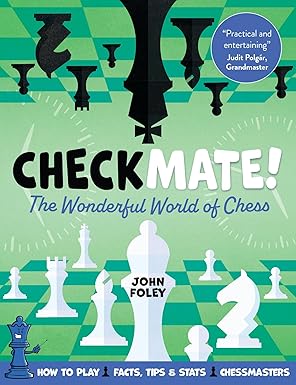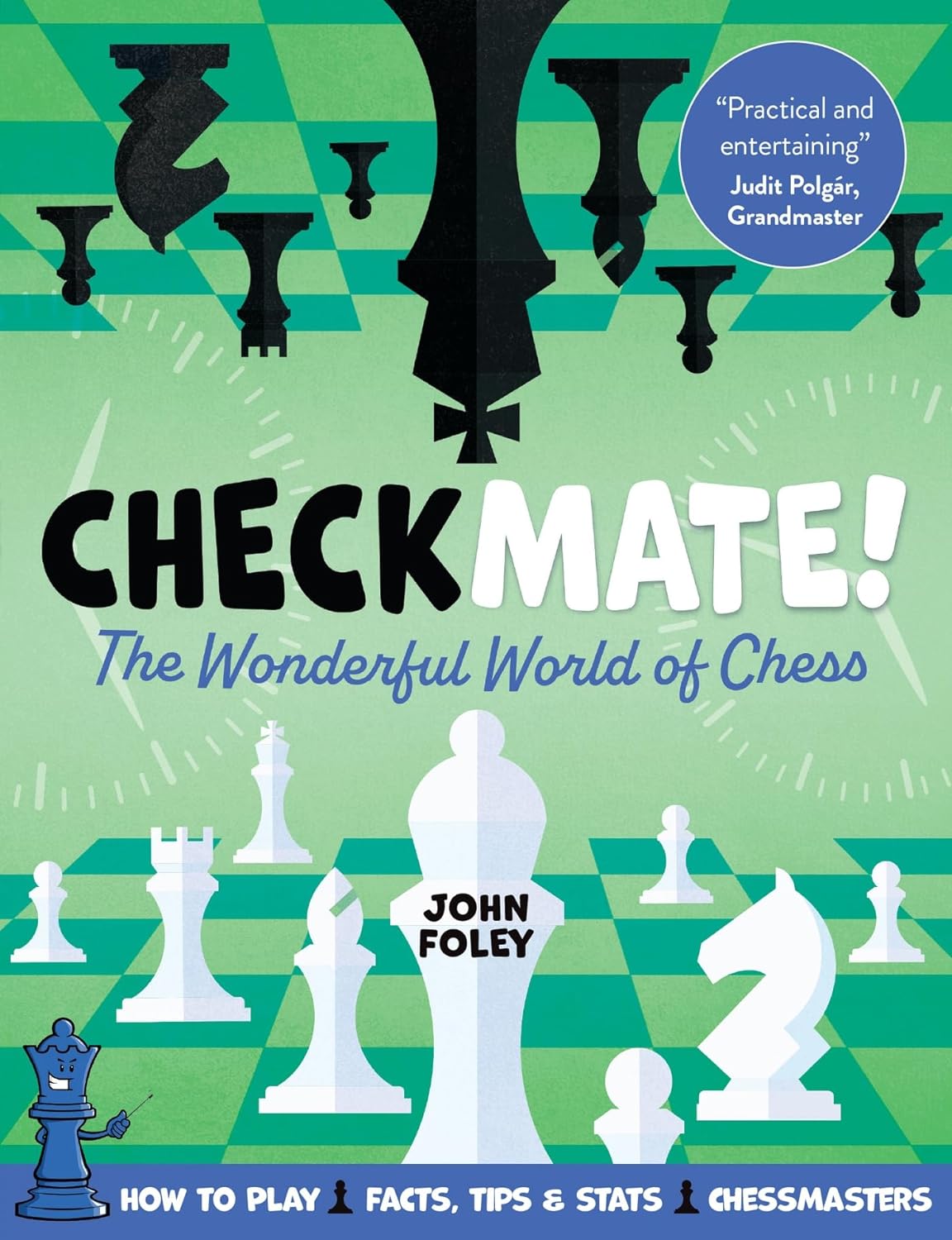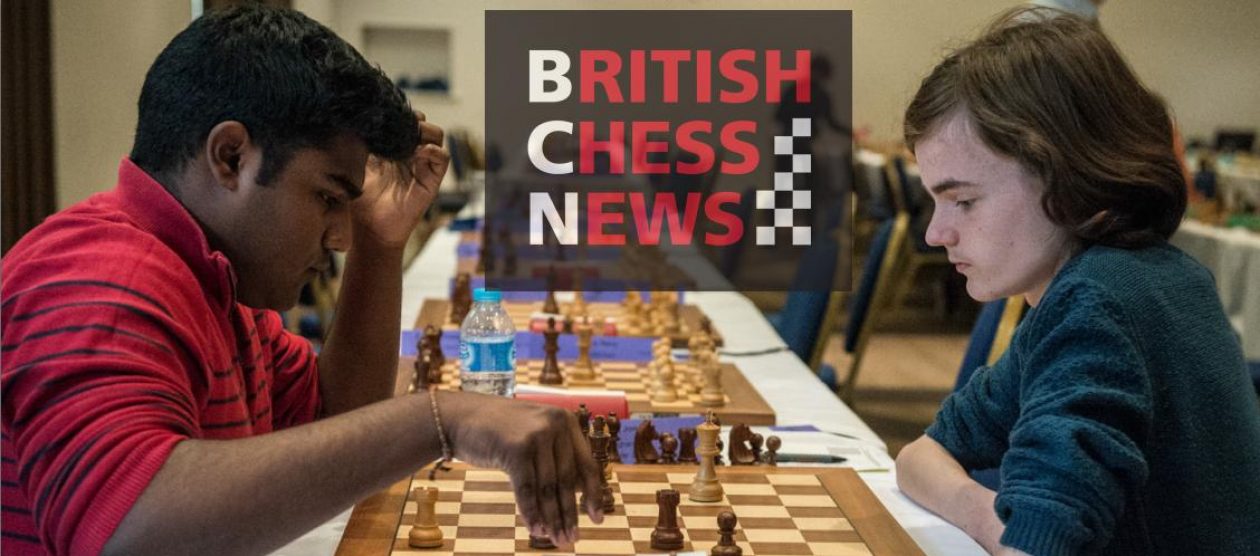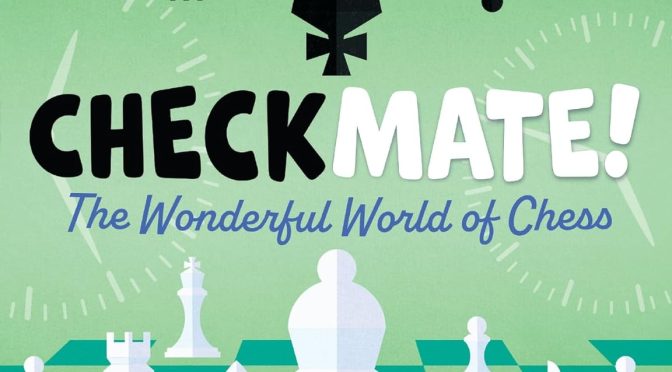
Book description on Amazon:
“Chess is the ultimate fun strategy game – and this is the perfect introduction to chess, whether you’re a budding master or you’ve never played before.
In simple, fun stages, readers will learn what every piece can do, and how to use them on the board. Clear, original board diagrams make the action easy to understand. Readers will also discover the best tactics to use against their opponent, from how to counter the Queen’s Gambit to how to avoid the Fool’s Mate. There’s plenty to discover about the wider world of chess too – including unusual trivia and unbelievable true chess stories from history. You’ll also find a full glossary of chess terms and profiles of some of the world’s greatest players inside.
Written with clarity and humour, this is the only guide any young chess player will need.”
From the back cover:
Enter the wonderful world of chess with this amazing all-in-one guidebook.
INSIDE YOU’LL FIND:
- The complete beginner’s guide to chess
- Everything about special moves, tactics and more
- Chess trivia and the world’s best players
- Info on the world of tournament chess
- In-depth tips and strategy to become a master player
Whether you’re a total beginner, looking to improve your game, or you’re a grandmaster in the making, this is the book for you!
A very large number of books for young beginners are available: I’ve written many myself, and even had a few of them published. How does this one stand out?
The first thing you’ll note is that it looks really good. The target market would be children of older primary school age (say age 9-11), who would be attracted by the mixture of photographs, large, colourful diagrams and friendly cartoon characters and enjoy reading the book.
But what about the contents?
There are two very different approaches to teaching chess to children. They might be categorised as a ‘fast’ approach’ and a ‘slow’ approach.
The slow approach can be seen in, for example, the Steps Method, which seems to have been based, whether intentionally or not, on the old Soviet method. Here, children spend the first year playing minigames using subsets of the pieces and rules and solving worksheets (small black and white diagrams) before they play a complete game. They then spend a couple of years playing within their study group before taking part in external competitions. Children start their games with 1. e4 e5 and are encouraged to play open games and gambits to develop their tactical skills.
By contrast, the fast approach teaches children the basics very quickly so that they can play competitively as soon as possible. They will often be taught safe, fairly closed openings so that they will avoid losing quickly to something like Scholar’s mate.
My personal preference, which I use in my own teaching and writing, is for something somewhere between the two. While the Steps Method is pedagogically excellent, it underestimates the social and other benefits of competitive tournament and match chess. It might also be seen, by today’s standards, as rather too serious and not much ‘fun’. On the other hand, the fast approach risks putting children into a competitive environment before they’re ready, and promotes the short-term fun of competition ahead of the long-term benefits of skills development.
Here, we start off with something about the history of chess, and learn about the board, the pieces and chess notation. We also learn the game of Fox & Hounds, which, although it’s a great game for children, you might think is more minidraughts than minichess.
Continuing with the ‘slow’ approach, the pieces are introduced in more detail using minigames to reinforce knowledge of the moves and power of each piece in turn. We’re then introduced to Losing Chess, which is always popular with children and an excellent way to teach them to look for captures. Then we have the three Special Moves, castling, pawn promotion and en passant.
We then move on to Tricky Tactics, helpfully talking about how to defend as well as about how to win pieces using forks, discovered attacks and so on.
Now a few children will gain a full understanding of, for example, forks, by seeing a couple of examples in a book like this, but most will benefit from spending time solving a lot of puzzles involving forks before moving on to the next topic. My (heretical) opinion is that teaching chess to children of primary school age requires a lot of repetition, reinforcement and feedback, and this book offers no scope for active learning through quizzes, or in any other way.
By now we’re halfway through the book, and only at this point are we introduced to the concepts of check and checkmate, and shown some typical checkmate patterns. I find this order rather strange because some of the tactics on the previous pages involved checks. However, again rather strangely, at this point there’s no mention of stalemate, although it is defined at the glossary at the end of the book.
Then it’s onto the opening. There’s some general advice about development, centre control and king safety, as you’d expect. We’re recommended to play the London System with White, and 1… c6 with Black, leading to either the Caro-Kann or the Slav: very different from the old Soviet recommendation of the King’s Gambit.
We get a few pages on strategy, and the reach the ending, with some helpful advice on pawn and rook endings. We still haven’t learnt to mate with KQ v K or KR v K, though, which I’d have thought was essential knowledge.
And then, by page 88, we’re ready for tournament chess so we have to learn about the touch and move rule, how to use a chess clock, the procedure for offering a draw and much else. We then meet some famous players of the past and the present, find out about chess technology, and finally analyse a game between Shirov and Judit Polgár (Buenos Aires 1994), won by Black. At the end of the book there’s a useful glossary.
Although much of it is well done, especially the minigames on the first few pages, it’s representative of a whole philosophy of junior chess which I don’t really care for, teaching chess far too quickly and encouraging competition before they’re ready. It’s what many parents and teachers want, though, and what most children (think they) want. The idea that you can ‘become a master player’ by reading a 112 page book is, I suppose, too tempting.
Beyond my philosophical reservations I have another problem: with the number of mistakes in the book.
It’s great to present chess trivia, but you need to get things right.
It’s good that female players are well represented, but on p69 we’re told that Hou Yifan is the highest-rated female player ever. On p94, however, we’re correctly informed that it is actually Judit Polgár who holds this honour.
On p86 we’re told that ‘Half of the games in chess reduce to rook endings’: no it’s about 8-10% (and much lower in games played by beginners).
On p89 we’re told that chess clocks were introduced in the London 1851 tournament: no, it was the London 1883 tournament.
There are also confusions between White and Black, misnaming of squares, inconsistent spellings and grammar. You might think I’m over-pedantic about picking up this sort of thing, but if you’re writing for young children it’s important to get everything right.
Children within the target age group will undoubtedly enjoy reading this book. Some of them will be talented enough to fill in the gaps, and others may be inspired to take the game further and look elsewhere for more information, but many, once they’ve got past the attractive illustrations, will end up confused.
You might like the underlying philosophy more than I do, but even then the number of mistakes and the omission of several pieces of essential knowledge make it hard for me to offer a strong recommendation. A read-through by a knowledgeable proof-reader would have made a lot of difference.
About the Author:
“John Foley is the Secretary of the Education Commission of the European Chess Union. He has authored workbooks for children and also works as a chess tutor.”

Richard James, Twickenham 6th January 2025

Book Details:
- Softcover: 112 pages
- Publisher: Welbeck Children’s Books (28 Sept. 2023)
- Language: English
- ISBN-10:180453515X
- ISBN-13:978-1804535158
- Product Dimensions: 18.8 x 1.2 x 24.6 cm


